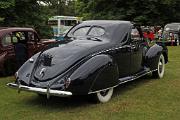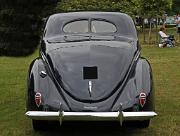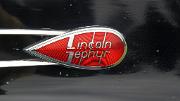
aa Lincoln Zephyr V12 1939 badgea
Lincoln Zephyr V12 1939 - badge on bonnet side. The name 'Zephyr' is believed to have come from the Burlington Zephyr train launched in 1934 on the Dawn-to-Dusk Denver to Chicago run. The aluminium-clad train was designed by Edward Budd a coachbuilder. The name 'Zephyr' referred to the West Wind and was a symbol of re-birth
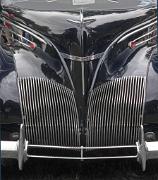
ab Lincoln Zephyr V12 1939 grille
Lincoln Zephyr V12 1939. Credit for the Lincoln Zephyr goes to Eugene Bob Gregoire who transformed the engineering done by John Tjaarda. However, it was Holden 'Bob' koto who gave the Zephyr its prow. For 1936 and 1937 a tall full height grille was at the front of the Zephyr, but in 1938 it was a lower grille similar to this on the 1939 model. All change again in 1940 and every year to the end of the model.
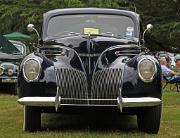
ac Lincoln Zephyr V12 1939 head
Lincoln Zephyr V12 1939. Originally intended to have a rear-mounted V8 engine, the Zephyr was reformatted to have a front-mounted V12. The V12 unit was not the existing Lincoln V12, but instead a version of the flathead V8 given to the Ford V8 in 1932. However, it wasn't simply a Ford V8 plus a half, because the lincoln unot was a 75 degree V12 unlike the 90 degree Ford V8; there were other differences too. However the Zephyr needed a more compact unit than existing V12, hence the plagiarism from Ford's compact V8.
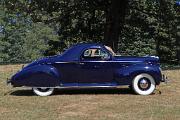
Lincoln Zephyr V12 1939 3-window Coupe side
Lincoln Zephyr V12 1939 3-window Coupe. The Coupe (or 3-window coupe) was first offered in 1937, and shared the enormous 122-inch (3.1m) wheelbase of the 5.5metre long 4/5-seater Zephyrs. The Zephyr had been laid out by John Tjaarda as a streamlined car with a rear-mounted V8, but Bob Gregoire 'normalised' it as an aerodynamic car with front'mounted V12
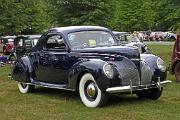
Lincoln Zephyr V12 1939 front
Lincoln Zephyr V12 1939. The original concept design by John Tjaarda, which at one time was going to be rear-engined, was reworked by Bob Gregoire with input at the front from Holden Bob Koto.
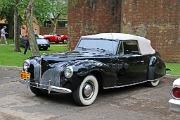
Lincoln Continental 1940 Cabriolet front
Lincoln Zephyr Continental 1940. Eugene T. 'Bob' Gregorie was commissioned by Edsel Ford to build him a lower more sporting convertible out of the Lincoln Zephyr; the result was so liked that it became the first Lincoln Continental.
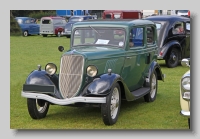
Ford Model Y 1934 Tudor front
Click here to go to an album on: Designer Bob Gregoire. Ford Model Y 1934 Tudor
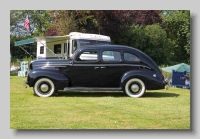
s Ford Deluxe 1938 Fordor Sedan side
Click here to go to an album on: Ford Model 91A 1938 Deluxe Fordor. This Fordor body shows the fashionable 'Torpedo' shape that Ford adopted for both the 2-door and 4-door Sedans. Ford intended the 'Deluxe' range to be higher-priced than standard Fords and less expensive than Lincoln. The body was designed for the 1937 model year by Alex Tremulis, Bob Koto, and Phil Wright under John Tjaarda at Briggs Manufacturing because Ford did not yet have its own styling office.
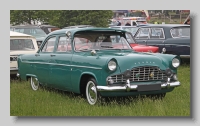
Ford Zephyr MkII 1956 front
Click here to go to an album on: Ford Zephyr MkII. Ford Zephyr MkII 1956. The 'egg-crate' grille was replaced in 1957 with a horizontal bar design.

